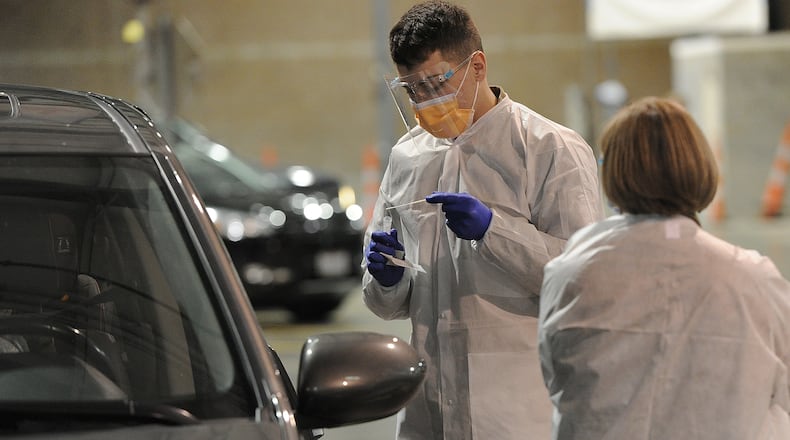Free at-home tests
Every home in the U.S. can soon order four free at-home COVID-19 tests, through an initiative by the Biden administration.
The tests will be free including shipping and people can go to covidtests.gov to order. Tests will typically ship within 7-12 days of ordering, according to an announcement from the White House. Federal officials are planning to soon launch a call line for people who can’t order online.
Originally, the Biden administration said ordering would begin Jan. 19 but the website went live early and people can place orders now.
Testing and libraries
Public libraries have been helping provide free testing kits but as of recently, they are generally out of tests at this point. With Ohio experiencing a delay in a shipment of more than 800,000 COVID-19 testing kits, the state health department announced it is prioritizing testing supplies for K-12 schools, colleges and universities.
Covering costs of testing
Starting Saturday, private insurance companies are supposed to cover at-home COVID-19 tests. They are required to pay for up to eight tests per covered person per month, according to details published Friday by the Biden administration.
Medicaid already is required to cover these tests. Medicare is not part of this change, but still covers fully covers COVID-19 tests if a doctor orders it.
People can save receipts and file a claim with their insurer to be reimbursed. But insurers are also being encouraged by the federal government to set up a way for people to get the test paid for at the time of purchase so people don’t need to go through the process of filing a claim.
A person’s insurance plan can give details on whether there are pharmacies in their area where they can get the tests covered on the spot and not have to file to be reimbursed.
The New York Times reported Friday that many insurers were still scrambling to get set up by Saturday and the initial rollout to get tests covered many be rocky while the details are worked out.
Why testing is so backlogged
The virus is spreading rapidly, with a record number of people getting infected.
About 1.5% of the Ohio population tested positive for the week of Dec. 26, according to preliminary state testing data with both PCR and rapid antigen tests. The following week, about 1.3% of the Ohio population tested positive.
That’s roughly 333,000 people in the state testing positive across those two weeks.
There is a backlog in recording COVID-19 tests so that data is preliminary and many who take tests at home never report positive results, but even with those caveats, the information still indicates high levels of spread and testing demand.
PCR vs. Rapid
With testing in short supply, what test you use may end up being based on availability.
If you are seriously ill with symptoms of COVID-19, your provider will likely order a PCR test because it is the “gold standard” of tests.
Rapid tests are more accurate if used by someone early into having symptoms. If performing at home, it is important to use according to the package directions to get accurate results. Rapid tests can also be a good option if faster results are needed.
If comparing to a PCR test, antigen tests are more likely to generate false negative results, especially when performed on people who don’t have symptoms, according to Yale Medicine. In other words, people can be fairly confident in a positive result from either kind of test, but a negative rapid test should be treated with more caution than a negative PCR test.
Finding testing
Many testing sites are by appointment only. Many pharmacy chains like CVS and Rite Aid, urgent care centers, and health networks all have testing appointments that can be made online on their websites.
Public Health - Dayton & Montgomery County has a list of options in the county for COVID-19 testing at www.phdmc.org.
A state of Ohio regional testing site for people of all ages is at 3300 W. Tech Road, Springboro, across from Dayton Children’s south campus. Open 9 a.m. to 5 p.m. Monday through Friday.
Where not to go
Don’t go to the ER if only going for COVID-19 testing. Local hospitals are struggling with staffing shortages and high patient volumes, and officials have urged people to save capacity for emergencies and instead go to a local testing site.
About the Author

